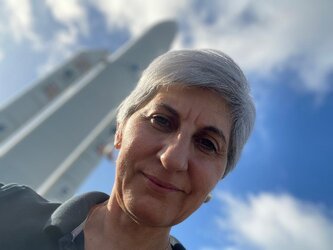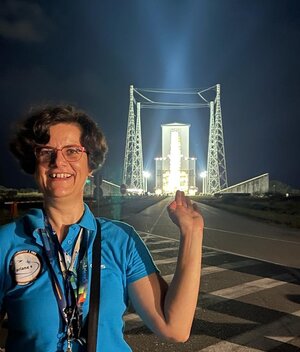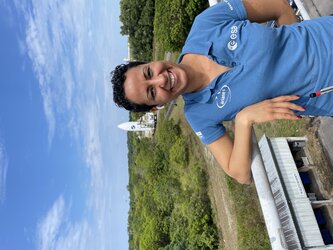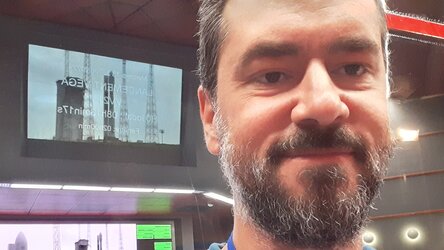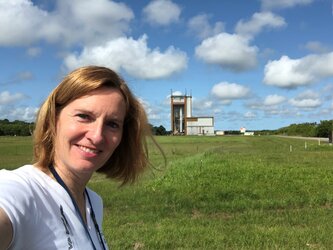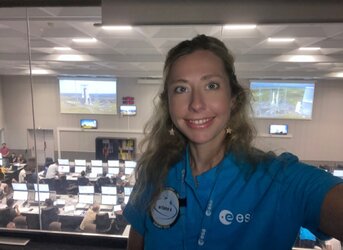Faces of Ariane 6: Guillaume
It takes thousands of people to design, develop, build and operate a complete launch system to escape Earth's gravity. Here we highlight the people from all over Europe working on space transportation to ensure access to benefits of the wider Universe.
What is your name and role?

Guillaume Galateau, I am an ESA Launcher System Engineer, responsible for ESA’s assessment of the first Ariane 6 launcher (built by prime contractor ArianeGroup) and mission flightworthiness, enabling ESA, as launch operator, to authorise the launch at liftoff.
My job is an ongoing task to challenge the justification for launcher flightworthiness including launcher items, stage structures, pyrotechnical separation systems, propulsion systems, avionics and software systems. Throughout a launch campaign, this includes launcher integration, preparation, checks and assessing technical files based on mission risk assessment. Most of the time, additional justifications are required before flight due to hardware production discrepancies or specific needs for a mission: necessary relevance relies on competencies and experience.
Generally, there are three possible outcomes from a technical assessment: “acceptance as is”, “acceptance after extra investigation and justification” with positive conclusions, or “rejection” requiring a partial replacement or additional refurbishments.
Space transportation has stringent needs, there is little tolerance to failure, launch systems need to be incredibly robust to withstand extreme conditions and zero gravity. This requires deeper investigations that in other industries including more laboratory analysis and simulations to thoroughly understand all processes, this makes my job all the more interesting.
Now we are well advanced in the Ariane 6 first launch flight level 1 analysis, the availability of enriched launcher instrumentation from the flight is one of the most significant successes, providing real data for better understanding and anomaly-corrections working towards the launcher exploitation.
How long have you been involved in space transport and what were your tasks?
I have been involved in rocket launch activities for the past 24 years, with 18 years of experience in cryogenic propulsion with Ariane launchers and five years in launcher system engineering for both Ariane and Soyuz launch campaigns.
For these activities, I was involved in predicting engine system performance and optimisation, procurement management, launcher system flightworthiness assessment management and customer communication.
What is your educational background and prior work experience? How did you come to work on space transportation?

My primary education is an engineering degree in the field of fluid mechanics and a master’s in fluid dynamics.
My whole career has been devoted to space transportation, beginning with cryogenic propulsion and Vinci engine development, including performance enhancement studies.
I later switched to Vulcain 2 engine production and exploitation, including propulsion flightworthiness assessment before widening the scope of my duties to Ariane 5 launcher flightworthiness for spacecraft customers as part of Arianespace launch campaign management (launcher engineering). Before the Ukraine war, I also had the opportunity to be part of Soyuz launch campaign management in Russia and Kazakhstan for private customers.
I came to ESA space transportation for Ariane 6, its end of development, qualification and inaugural flight, to bring my launcher engineering background to serve the needs of ESA programmes.
What is the most notable or memorable moment during your time working on space transport?
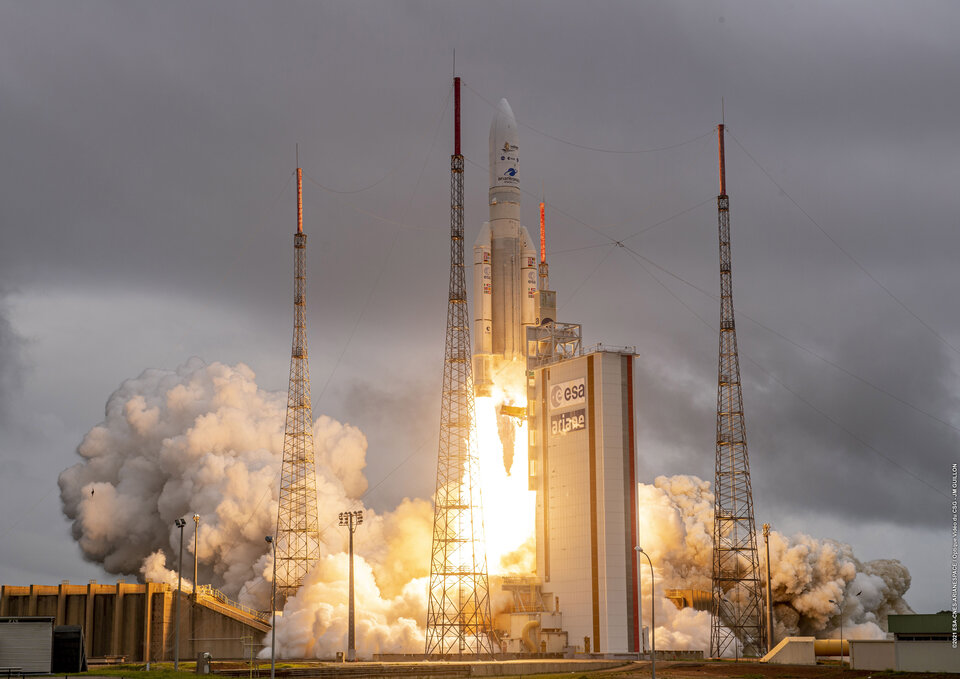
The completion of the James Webb Space Telescope mission after its launch on 25 December 2021 where I worked as Launcher System Technical Officer for Arianespace. For this perfect launch of humankind’s most advanced telescope we received recognition through NASA and IAA awards.
What does it mean to you to be part of the larger team of rocket scientists and engineers?
Space transportation is a demanding activity with little tolerance of unwanted events during flight. Teamwork is a necessity as well as the opportunity to gather people with the best competencies and expertise to face the challenges of harsh spaceflight conditions and to overcome, step by step, all unwanted events that are likely to occur if you don’t painstakingly consider and understand every aspect to ensure mission completion.
What is one thing you’d like the European public to know about your job?
Working in launcher flight-worthiness, where we literally assess if a launcher is worthy to fly, we are deeply focused on protecting payloads (the spacecraft flying on our rocket and built by our customers) and the mission objectives but also people’s property, health and the environment, minimising risks with respect to how public money is used.

In this field, Europe is very demanding as investigations and constraints are more stringent than other countries when it comes to:
- In-depth investigations into each mission (both in launcher production and mission needs) until we have a comprehensive understanding and feedback on possible solutions that are developed for future improvements.
- Safe and responsible management of space debris for people's and environmental protection.
More importantly, Europe paves the way towards understanding spaceflight issues that cannot be tested on the ground such as propellant management in microgravity as well as helping to acquire technologies needed to master the challenges the investigations bring up.
One of the most important successes of Ariane 6’s inaugural mission was the collection of a large amount of technical flight data which consolidates our achievements so far and prepares us for the next steps towards orbital flights that meets Europe’s needs for independence, such as security, space exploration and human spaceflight.
Hardened international competition emphasises the need for European industry to make new technologies available for flight to remain competitive and open perspectives for targeted space logistics needs.
What’s the best thing about your job?
The challenges we face to understand issues that arise, and the exhaustive mastery we develop to understand them – from laboratory expertise to state-of-the-art simulations – is followed by immense satisfaction when mission success confirms that no major issues were ignored.
In the rocket business, a low tolerance for failure creates a very deep understanding.
What do you do outside of your job to unwind, what are your hobbies, what do you do for fun?
I enjoy mountain biking and flying planes – I am in the process of getting a private pilot license.
Do you have any advice for future generations interested in space exploration?
The following can be drawn from my experience:
- Favour substance over form and focus on in-depth understanding.
- Do not be afraid to face the unknown. There is more to learn.
- Respect physics: it is more stubborn than you (and not sensitive to programmatic needs and shortcuts)


Access the video














 Germany
Germany
 Austria
Austria
 Belgium
Belgium
 Denmark
Denmark
 Spain
Spain
 Estonia
Estonia
 Finland
Finland
 France
France
 Greece
Greece
 Hungary
Hungary
 Ireland
Ireland
 Italy
Italy
 Luxembourg
Luxembourg
 Norway
Norway
 The Netherlands
The Netherlands
 Poland
Poland
 Portugal
Portugal
 Czechia
Czechia
 Romania
Romania
 United Kingdom
United Kingdom
 Slovenia
Slovenia
 Sweden
Sweden
 Switzerland
Switzerland



























